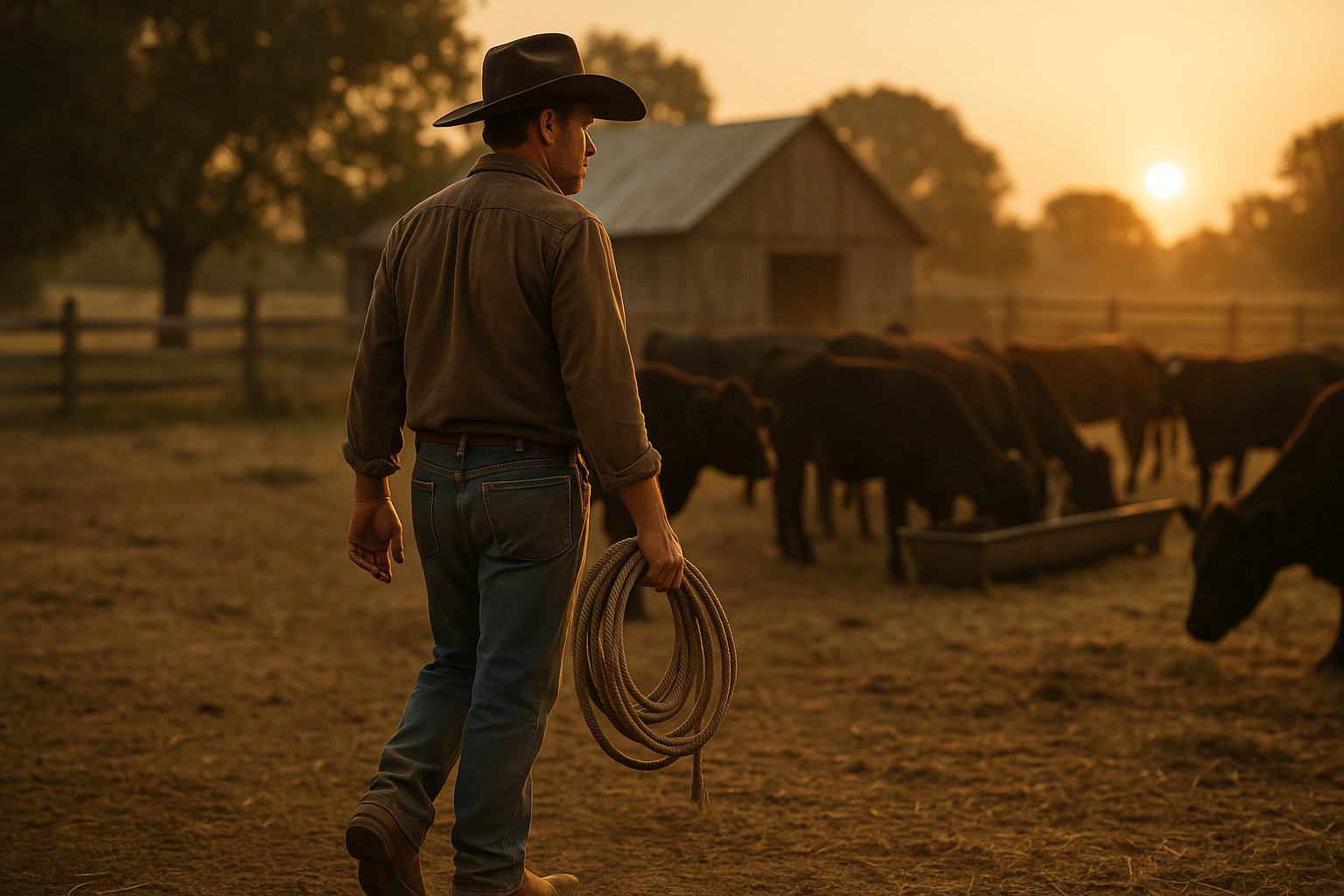
I didn’t grow up on a cattle ranch, but I’ve been riding since I was a kid—started on sheep, worked my way up through calves and steers, and eventually bulls. About ten years ago, I got my own small ranch, and it’s been as much a part of my life as the rodeo ever since. What I’ve learned from working that land—day in and day out—has shaped me just as much as any eight-second ride.
To folks on the outside, rodeo might look like pure chaos—thrill-seeking, gutsy showmanship. But any cowboy who’s lived both lives knows the truth: the roots of rodeo run straight through the ranch. The arena doesn’t teach you how to endure—the ranch does.
Physical Conditioning Through Daily Labor
Ranch work keeps you in shape whether you want it to or not. You’re hauling hay, roping calves, doctoring sick animals, chasing strays on foot, and fixing fence in the heat or snow. You build strength where it counts—your core, your grip, your legs, your back—and it’s the kind of strength that doesn’t fade just because the wind’s blowing sideways.
I’ve never set foot in a gym to prep for a ride. I don’t need to. Balancing on uneven ground while dragging a calf to the branding fire is more real-world training than any squat rack will give you. That strength translates straight to the arena—bull riding is explosive, full-body effort, and the balance and endurance I’ve gained on the ranch is what keeps me on top when it counts (Schmidt, 2019).
Mental Toughness and Staying Cool Under Pressure
Out on the ranch, there’s no panic button. You’ve got to stay calm when a cow turns on you in the chute or when a storm rolls in and half your herd’s still out. That’s pressure—and it trains your mind just like the ranch builds your body.
In the arena, it’s the same deal. You’re nodding your head with a crowd watching, sponsors on the line, and 1,800 pounds of bull twisting under you. The guys who make it aren’t just strong—they’re calm. Cool heads stay in control. Ranch work forces you to build that kind of mindset every day.
And you learn patience. Some days on the ranch, nothing goes right—the tractor breaks, the calves get sick, the waterline freezes. You learn to adjust and keep moving. That resilience is what gets you back on the bull after a bad wreck.
Animal Sense and Reading Movement
Ranching teaches you how to read animals, plain and simple. You learn the difference between a cow bluffing and one about to charge. You notice the twitch of an ear or a shift in weight, and you act before the problem hits.
That instinct is gold when you’re on a bull. I’ve ridden bulls that changed rhythm mid-jump or swapped directions in a heartbeat. But I felt it coming because I’ve moved cattle in tight spaces for years. The same senses that keep you safe on the ranch give you an edge in the arena (Jennings, 2020).
Work Ethic and Routine
Ranch life doesn’t stop for bad weather or birthdays. The cattle need fed, the water needs checked, the fences need mending. You learn to show up, tired or not. That kind of discipline carries straight into rodeo.
I’ve hauled all night to get to a small-town rodeo, slept three hours in the cab, and climbed on a bull before the sun burned the dew off the arena. Why? Because that’s the job. Rodeo, like ranching, rewards consistency—not flash. You want to make it, you have to work like you mean it.
Brotherhood and the Cowboy Code
On the ranch and in the arena, you don’t go it alone. We look out for each other. You help your neighbor during calving season, and he helps you come branding time. In rodeo, we’re all competing, sure—but behind the chutes, we’ve got each other’s backs.
I’ve seen guys hand over gear to a rider they barely knew because his bag didn’t show up. I’ve passed the hat for hurt cowboys more times than I can count. That kind of brotherhood is rare in this world, but it’s strong here. We live by the cowboy code—honor, grit, and taking care of our own (Thompson & Wallace, 2018).
Final Thoughts
At 44, I may not ride as many bulls as I used to, but I still ride. I still wake up early, feed the cows, fix the broken stuff, and keep this little ranch running. And I know that everything the ranch taught me—every early morning, every busted knuckle, every long day in the saddle—made me the rider I am.
So when I nod my head and the gate opens, I’m not just riding for a score. I’m riding for every cowboy who knows that the road to the arena starts with work, not applause. From ranch to rodeo—it’s all the same heart.
References
Jennings, L. (2020). The language of livestock: Understanding animal behavior on the ranch. Western Agriculture Press.
Schmidt, R. (2019). Body of the cowboy: Physical demands of ranching and rodeo sports. Journal of Western Athletic Performance, 12(3), 45–57.
Thompson, M., & Wallace, K. (2018). Cowboy up: Brotherhood and tradition in rural rodeo culture. Rural Sociology Review, 35(2), 112–130.

